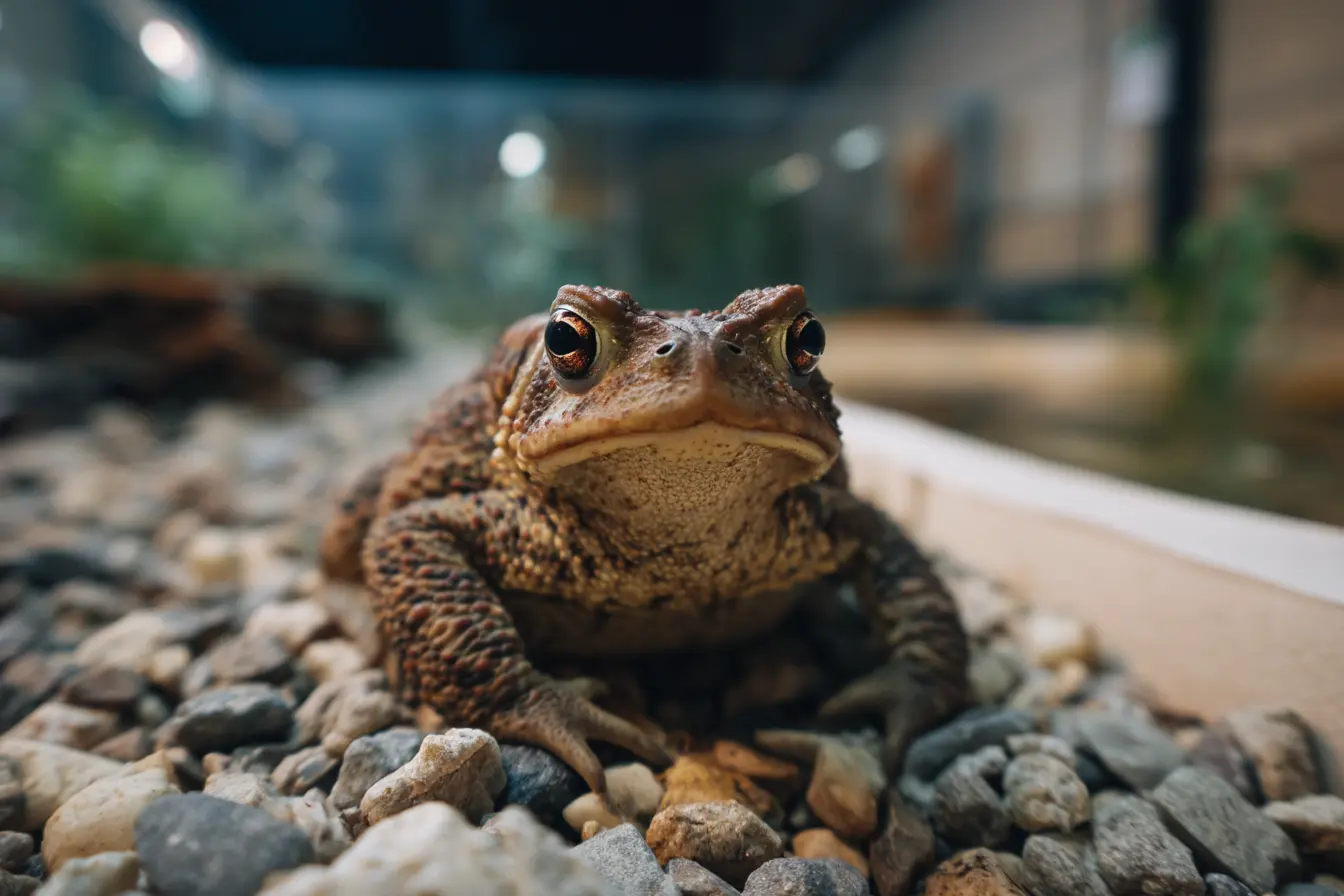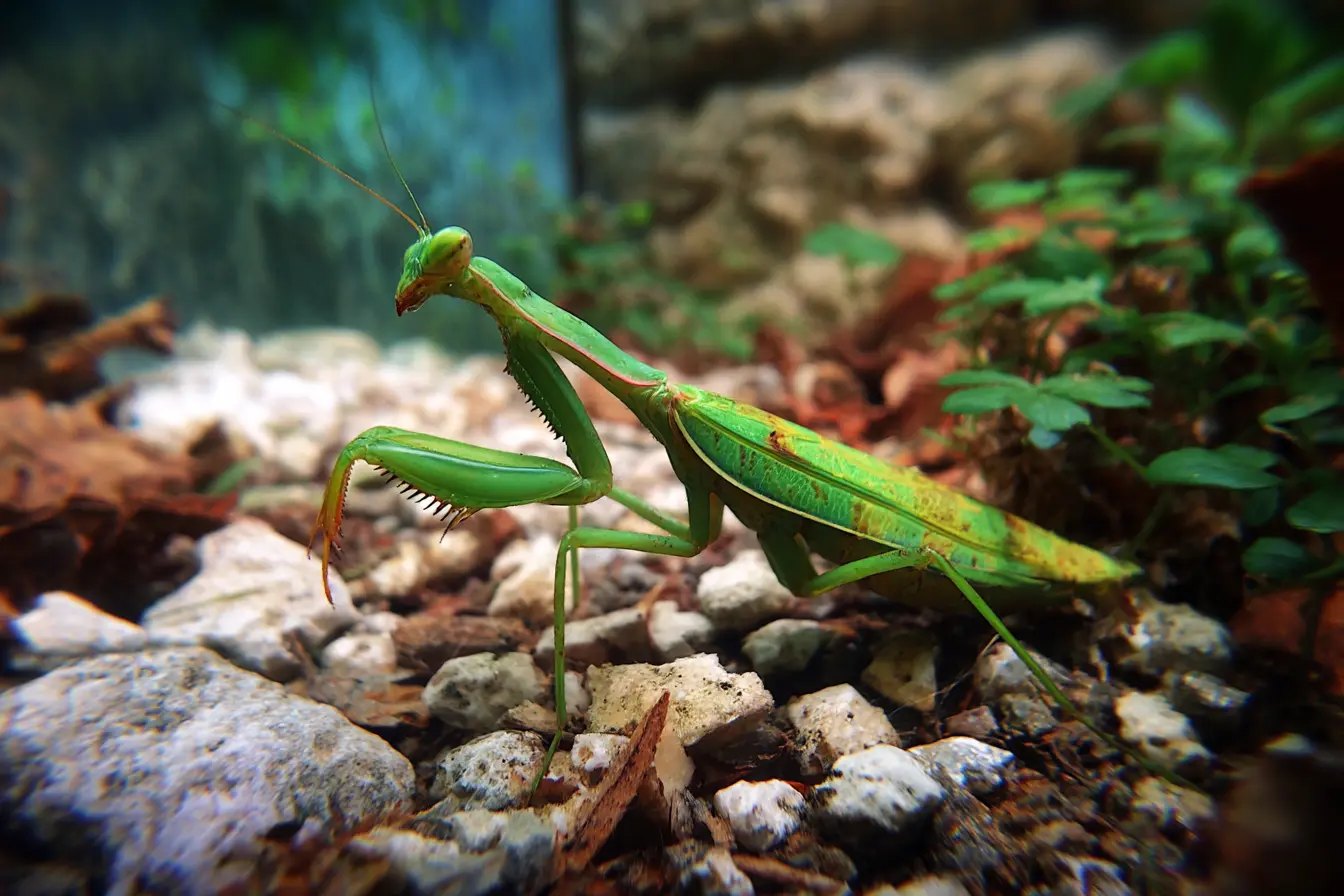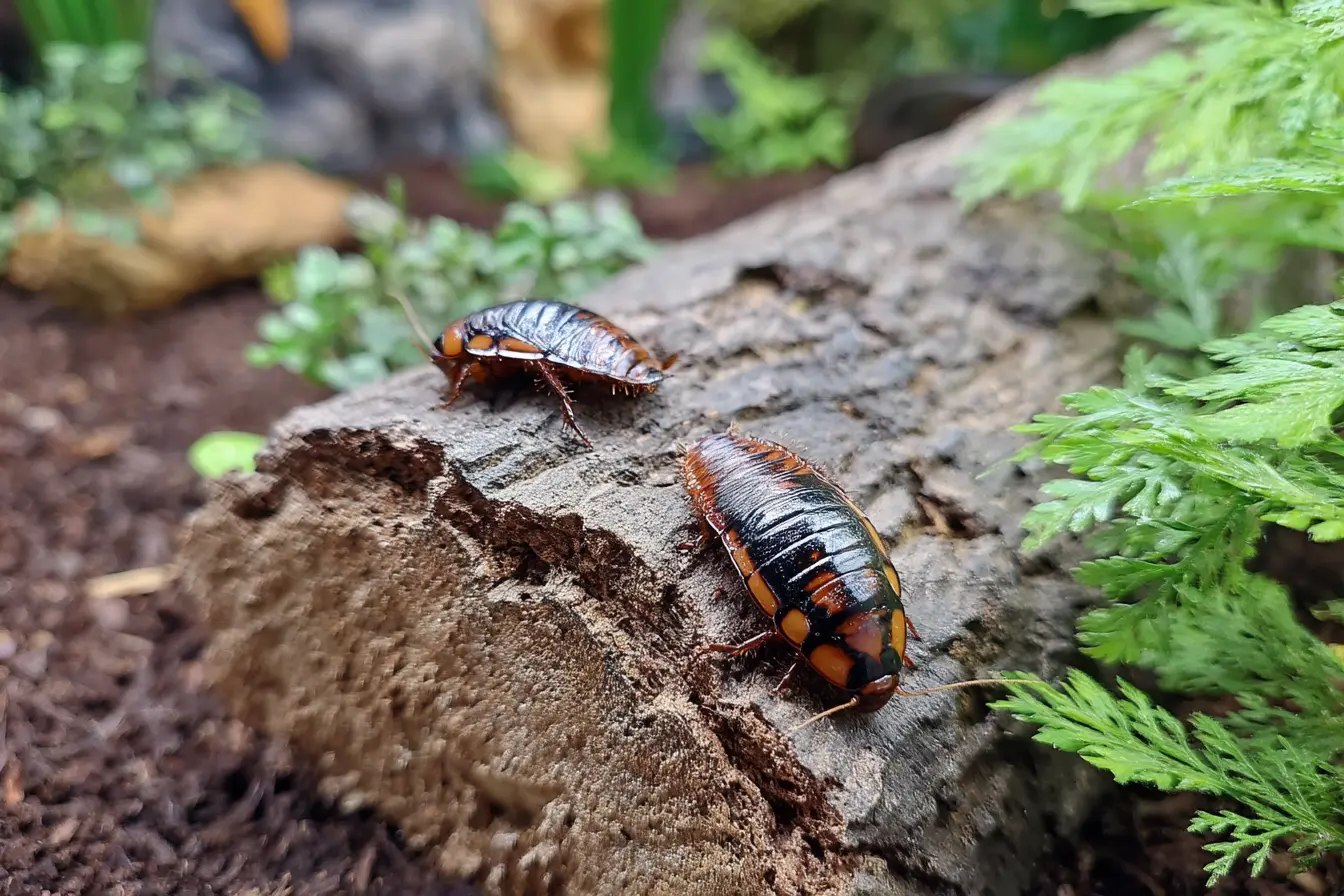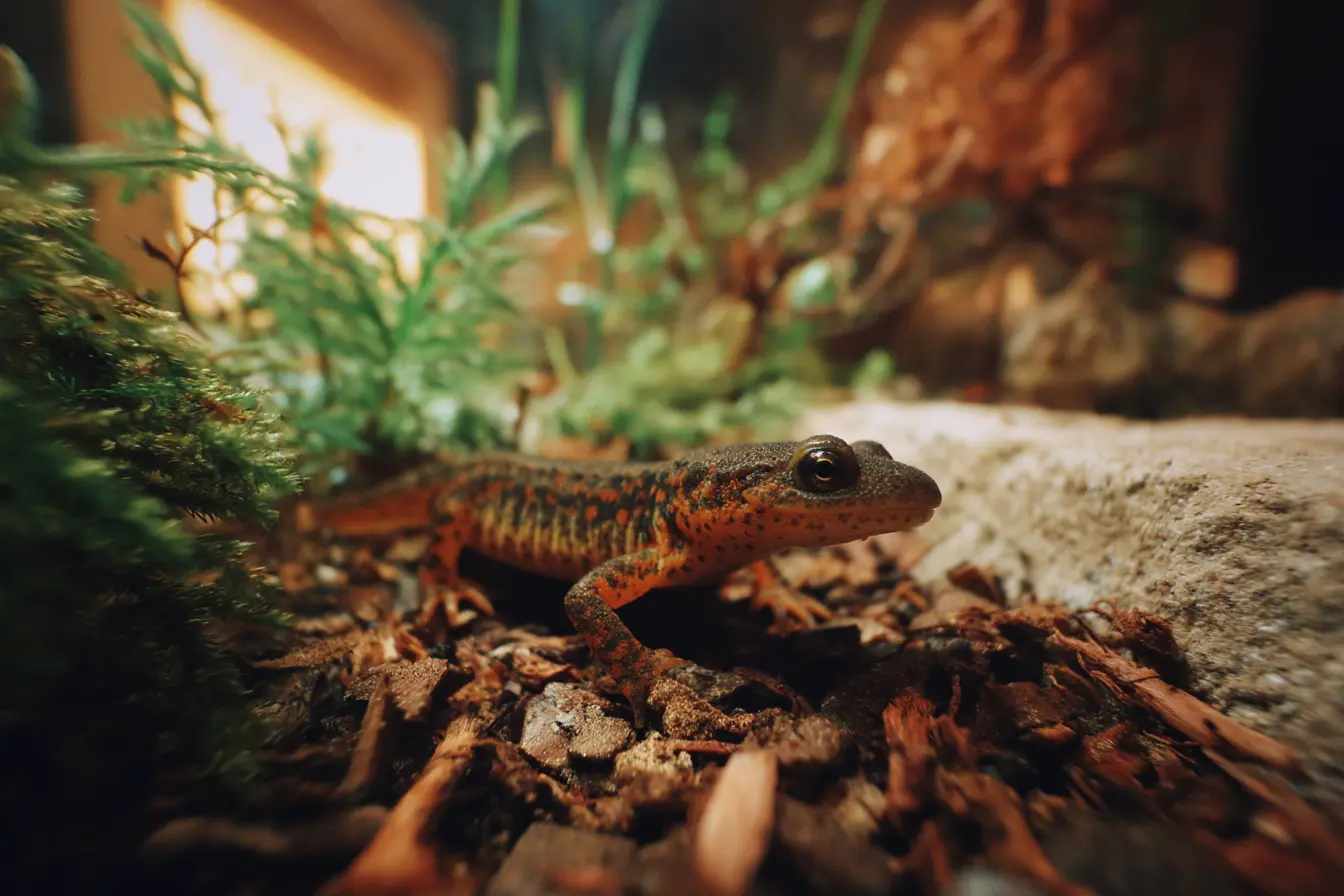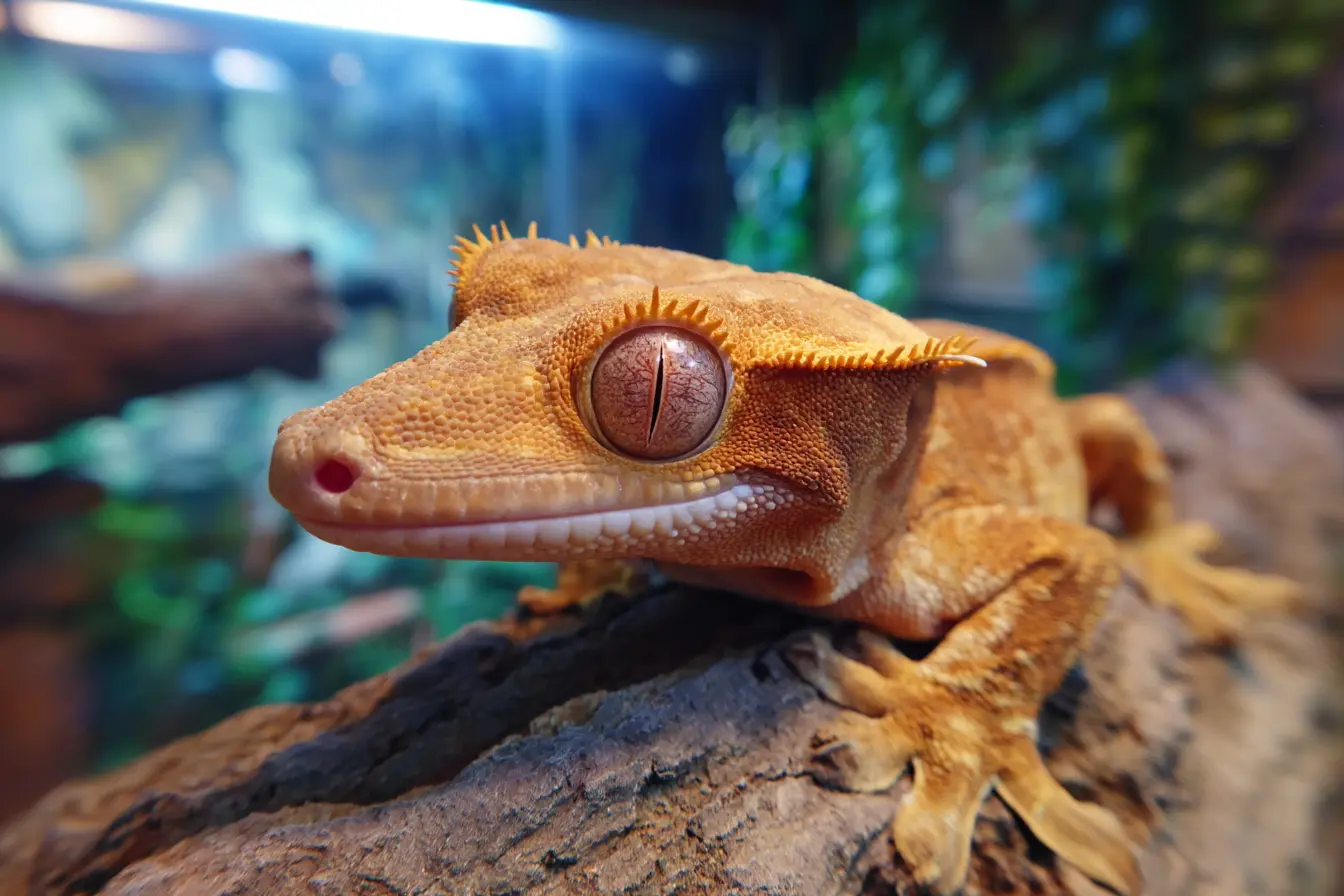
Thinking of Getting a Crested Gecko? The Complete Care Guide for New Owners
Crested geckos (Correlophus ciliatus) are one of the most popular pet reptiles in the UK. Known for their charming appearance, ease of care, and docile nature, they’re an excellent choice for both beginners and experienced reptile keepers. Unlike many other reptiles, they don’t require complicated heating systems or live food as their main diet, making them relatively low-maintenance.
In this guide, we’ll explore everything you need to know about crested geckos, including their natural behaviour, housing requirements, diet, health care, and more.
What is a Crested Gecko?
Crested geckos are small, arboreal lizards native to New Caledonia, a group of islands in the southwest Pacific. They are named for the fringed crests that run from their eyes down to their tails, giving them a distinctive, dragon-like appearance.
They grow to around 18–25 cm (including the tail) and can live for 15–20 years with proper care. Crested geckos are known for their gentle temperament and unique ability to drop their tails as a defence mechanism. Unlike other geckos, they don’t regrow their tails once lost.
Sourcing and Selecting a Crested Gecko
Choosing a healthy gecko from a reliable source is key to starting off right.
Where to Buy
- Reputable breeders often have a wide selection of morphs (colour and pattern variations) and can provide detailed care information.
- Specialist reptile shops in the UK usually stock crested geckos and offer advice on proper care.
- Rescue centres are a great option if you’d like to adopt a gecko that needs a new home.
Avoid buying from unverified online sources or pet shops that don’t specialise in reptiles.
What to Look For
When selecting a crested gecko, check for these signs of good health:
- Clear eyes and nostrils with no discharge or swelling.
- A plump body and tail base, indicating good nutrition.
- Smooth skin with no retained shed or injuries.
- Active and alert behaviour.
Setting Up the Perfect Habitat
Crested geckos are arboreal, meaning they spend most of their time climbing. Providing a vertical-oriented enclosure with plenty of foliage is essential for their well-being.
Enclosure Size
The minimum recommended size for an adult crested gecko is 45 cm wide by 45 cm deep by 60 cm tall. Taller enclosures are better to accommodate their climbing behaviour. For juveniles, a smaller setup can be used initially.
Substrate
The substrate should help maintain humidity without posing a risk of impaction. Suitable options include:
- Coconut fibre
- Orchid bark
- Paper towels for juveniles or quarantine setups
Avoid loose, dusty substrates like sand.
Temperature and Humidity
Crested geckos thrive in room temperatures of 20–26°C, with a slight drop at night. Additional heating isn’t usually necessary unless the temperature falls below 18°C. Humidity should be kept between 50–70 percent, with regular misting to maintain moisture. A hygrometer is useful for monitoring humidity levels.
Lighting
Crested geckos are nocturnal and don’t require UVB lighting, although low-level UVB (5–6 percent) can provide health benefits. Ensure they have a natural day-night cycle with 12 hours of light and 12 hours of darkness.
Enrichment and Hides
Provide plenty of branches, vines, and plants to encourage climbing. Multiple hides at different heights will help your gecko feel secure. A water dish should be placed in the enclosure, though most crested geckos prefer to drink droplets from leaves after misting.
Diet and Nutrition
One of the easiest aspects of crested gecko care is their diet. They thrive on a commercial powdered diet supplemented with occasional live insects and fresh fruit.
Staple Diet
Use a complete crested gecko diet available as a powdered mix. These diets are nutritionally balanced and easy to prepare—just mix the powder with water to create a paste.
Live Insects
Occasional live insects can be offered as a treat, such as crickets, dubia roaches, and calci-worms. Dust live insects with a calcium supplement once a week. Avoid overfeeding live insects to prevent obesity.
Fresh Fruit
Small amounts of mashed fruit like banana, mango, or papaya can be given occasionally, but these should not replace the commercial diet.
Handling and Behaviour
Crested geckos are generally docile and tolerate handling well once they get used to their owner. When handling:
- Support their body fully and avoid grabbing their tail.
- Handle them gently, especially when they are young or new to handling.
- Wash your hands before and after handling to avoid spreading bacteria.
Crested geckos can jump surprisingly well, so be prepared for sudden leaps.
Common Health Issues
Even with the best care, crested geckos can develop health problems. Knowing the signs early is important.
Metabolic Bone Disease
Caused by calcium deficiency and lack of vitamin D3. Symptoms include soft or deformed bones, lethargy, and difficulty moving.
Shedding Problems
Crested geckos shed regularly. Retained skin around the toes can cause circulation problems. Provide a moist hide to help with shedding.
Respiratory Infections
Often caused by incorrect temperatures or high humidity. Symptoms include wheezing, open-mouth breathing, and nasal discharge.
Parasites
Internal parasites can cause weight loss and diarrhoea. Regular faecal checks by a vet can help detect and treat them.
If you notice signs of illness, consult an experienced reptile vet immediately.
Specialist Vet Care
Crested geckos don’t need vaccinations, but regular health checks are important.
Routine Health Checks
An annual visit to a reptile vet is recommended. This includes a physical exam and a faecal test to check for parasites.
Emergency Situations
Seek veterinary attention immediately if your gecko shows signs of:
- Significant weight loss
- Lethargy or refusal to eat for several days
- Difficulty breathing
- Wounds or visible injuries
Care and Maintenance
Proper maintenance is essential for keeping your crested gecko healthy.
Daily Tasks
- Check temperature and humidity levels.
- Mist the enclosure and ensure water is available.
- Remove uneaten food.
Weekly Tasks
- Spot-clean the enclosure.
- Clean and disinfect decorations and hides as needed.
Monthly Tasks
- Deep-clean the entire enclosure and replace substrate.
- Replace UVB bulbs every six months if used.
Final Thoughts
Crested geckos are wonderful pets that can thrive in captivity with the right care. They’re easy to handle, relatively low-maintenance, and full of personality. However, like any pet, they require a long-term commitment and a suitable environment to stay healthy and happy.
By following this guide, you’ll be well-prepared to give your crested gecko a happy and healthy life.
Vets near you
Speciality vets
- Aquatics vet specialists
- Birds vet specialists
- Camelids vet specialists
- Cats vet specialists
- Cattle vet specialists
- Deer vet specialists
- Dogs vet specialists
- Equines vet specialists
- Exotic vet specialists
- Goats vet specialists
- Pigs vet specialists
- Poultry vet specialists
- Sheep vet specialists
- Small Mammals vet specialists
- Wild vet specialists
